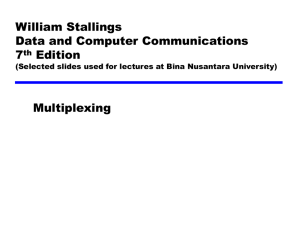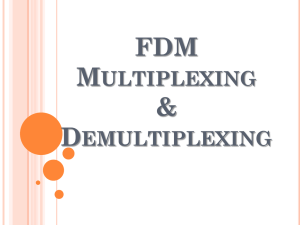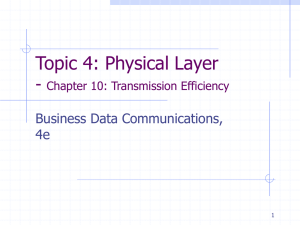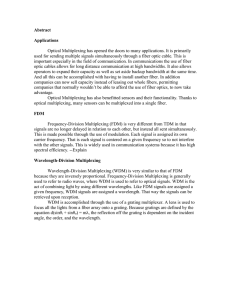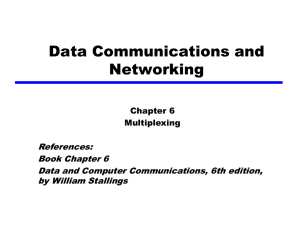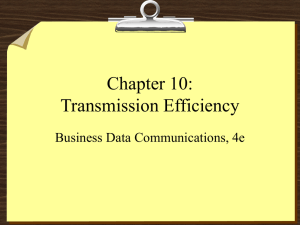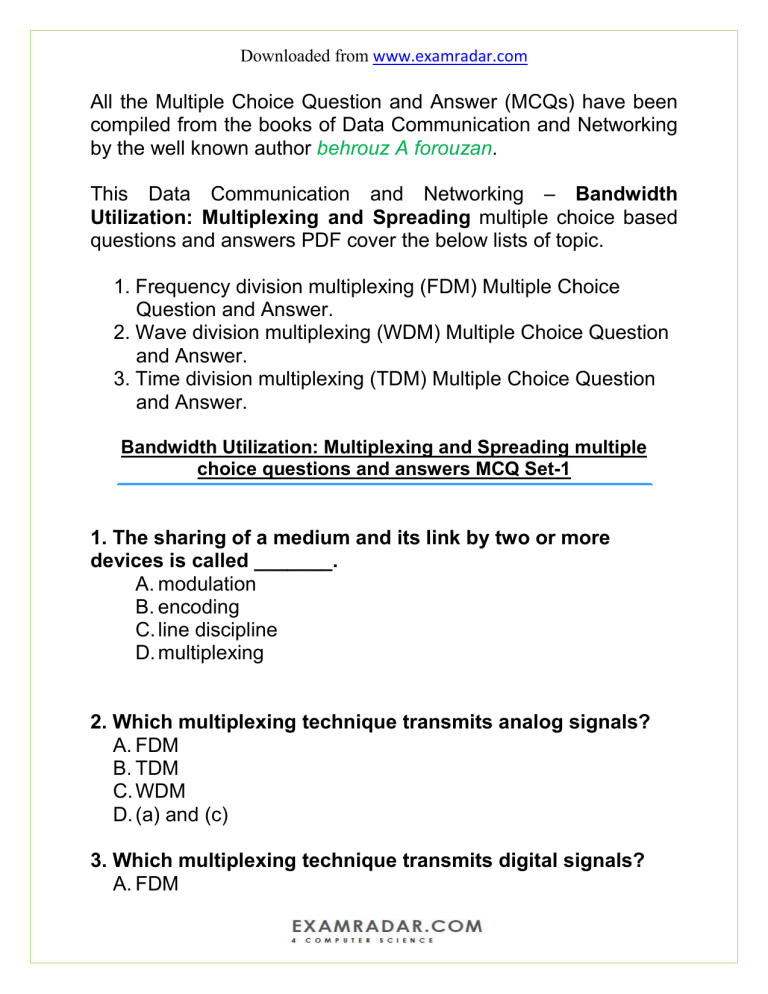
Downloaded from www.examradar.com All the Multiple Choice Question and Answer (MCQs) have been compiled from the books of Data Communication Communication and Networking by the he well known author behrouz A forouzan. This Data Communication and Networking – Bandwidth Utilization: Multiplexing and Spreading multiple choice based questions and answers PDF cover the below lists of topic topic. 1. Frequency division multiplexing (FDM) Multiple Choice Question and Answer. Answer 2. Wave division multiplexing (WDM) Multiple Choice Question and Answer. 3. Time division multiplexing (TDM) Multiple Choice Question and Answer. Bandwidth Utilization: Multiplexing and Spreading multiple choice questions and answers MCQ Set-1 Set 1. The sharing of a medium and its link by two or more devices is called _______. A. modulation B. encoding C. line discipline D. multiplexing 2. Which multiplexing technique transmits analog signals? A. FDM B. TDM C. WDM D. (a) and (c) 3. Which multiplexing technique transmits digital signals? A. FDM Downloaded from www.examradar.com B. TDM C. WDM D. None of the above 4. Which multiplexing technique shifts each signal to a different carrier frequency? A. FDM B. TDM C. Both (a) and (b) D. None of the above 5. In synchronous TDM, for n signal sources of the same data rate, each frame contains _______ slots. A. n B. n + 1 C. n - 1 D. 0 to n 6. In TDM, the transmission rate of the multiplexed path is usually _______ the sum of the transmission rates of the signal sources. A. greater than B. less than C. equal to D. not related to 7. Which multiplexing technique involves signals composed of light beams? A. FDM B. TDM C. WDM D. none of the above Downloaded from www.examradar.com 8. _________ utilization is the use of available bandwidth to achieve specific goals. A. Frequency B. Bandwidth C. Amplitude D. None of the above 9. ________ can be achieved by using multiplexing; ______ can be achieved by using spreading. A. Efficiency; privacy and antijamming B. Privacy and antijamming; efficiency C. Privacy and efficiency; antijamming D. Efficiency and antijamming; privacy 10. _______ is the set of techniques that allows the simultaneous transmission of multiple signals across a single data link. A. Demodulating B. Multiplexing C. Compressing D. None of the above Answer key for MCQ SETSET 1 Q-1 Q-2 Q-3 Q-4 Q-5 Correct Answer :multiplexing Correct Answer :(a) and (c) Correct Answer :TDM Correct Answer :FDM Correct Answer :n Downloaded from www.examradar.com Correct Answer :greater than Correct Answer :WDM Correct Answer :Bandwidth Correct Answer :Efficiency; privacy and antijamming Q-10 Correct Answer :Multiplexing Q-6 Q-7 Q-8 Q-9 Bandwidth Utilization: Multiplexing and Spreading multiple choice questions and answers MCQ Set-2 Set 1. In a multiplexed system, __ lines share the bandwidth of ____ link. A. 1; n B. 1; 1 C. n; 1 D. n; n 2. The word ______ refers to the portion of a _______ that carries a transmission A. channel; link B. link; channel C. line; channel D. line; link 3. ______ can be applied when the bandwidth of a link (in hertz) is greater than the combined bandwidths of the signals to be transmitted. A. TDM B. FDM C. Both (a) or (b) D. Neither (a) or (b) Downloaded from www.examradar.com 4. FSM is an _________technique A. analog B. digital C. either (a) or (b) D. none of the above 5. ____ is designed to use the high bandwidth capability of fiber-optic cable. A. FDM B. TDM C. WDM D. None of the above 6. ______ is an analog multiplexing technique to combine optical signals. A. FDM B. TDM C. WDM D. None of the above 7. _____ is a digital process that allows several connections to share the high bandwidth of a link. A. FDM B. TDM C. WDM D. None of the above 8. ____ is a digital multiplexing technique for combining several low-rate channels into one high-rate one Downloaded from www.examradar.com A. FDM B. TDM C. WDM D. None of the above 9. We can divide ____ into two different schemes: synchronous or statistical A. FDM B. TDM C. WDM D. none of the above 10. In ________ TDM, each input connection has an allotment in the output even if it is not sending data. A. synchronous B. statistical C. isochronous D. none of the above Answer key for MCQ SETSET 2 Q-1 Q-2 Q-3 Q-4 Q-5 Q-6 Q-7 Q-8 Correct Answer :n; 1 Correct Answer :channel; link Correct Answer :FDM Correct Answer :analog Correct Answer :WDM Correct Answer :WDM Correct Answer :TDM Correct Answer :TDM Downloaded from www.examradar.com Q-9 Correct Answer :TDM Q-10 Correct Answer :synchronous
